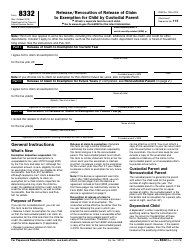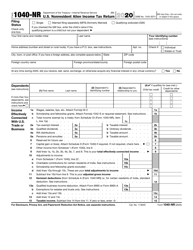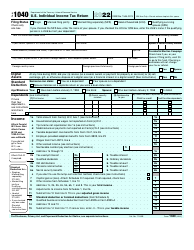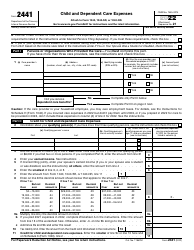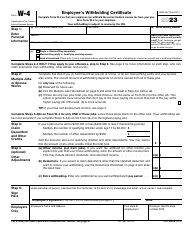Child Tax Credit: Guidelines, Requirements, and How to Apply

There is a good chance you are eligible to receive a child tax credit if you have young children or other dependents. In this article, you will discover the notable changes to the credit, such as the credit amount, credit refunds, earned income threshold, new requirements for children to qualify, and other recent developments introduced by the Internal Revenue Service (IRS).
What Is the Child Tax Credit?
The child tax credit is an income tax credit designed to help individuals offset the costs of raising a child. It will reduce your annual bill dollar-for-dollar. Always claim every deduction and credit you qualify for. You could even lower your tax bill so much the government will owe you money as a tax refund in the form of a direct deposit into your bank account or a mailed check. Reduce your tax liability by up to $2,000 per child. If you have two qualifying children, for instance, it will cut your tax bill by $4,000. A child tax credit gives an income boost to both parents living together and guardians of children and dependents.
New Child Tax Credit Rules
From time to time the IRS updates income limits and credit amounts while at the same time introducing new rules and tax reform changes. Here are the latest new child tax credit rules for the year 2020 you should know about:
- Amount of money per qualifying child with a valid Social Security Number (SSN) has been increased – from $1,000 to $2,000;
- Refundable portion of the credit – up to $1,400 for every eligible child – is now a refundable amount. This amount will increase slightly each year since it is indexed to inflation. If your tax credit is larger than your tax liability, your tax bill is reduced to zero;
- Earned income threshold – lowered to $2,500. The IRS caps the refundable portion of the child tax credit to 15% of your earned income exceeding $2,500. To qualify for the full refund, you must have at least $11,830 of earned income;
- For qualifying dependents other than your children you may receive a $500 non-refundable credit.
How to Qualify for the Child Tax Credit?
Figuring out who qualifies for a child tax credit is the first step on the way to reduce the actual amount of tax owed every year. These are the requirements for every parent who wishes to receive this benefit:
- The child is 16 or younger by the end of the year;
- The child is a U.S. citizen, national, or a resident alien with a valid SSN;
- The child is your son, daughter, stepchild, adopted child, foster child, brother, stepbrother, sister, stepsister, half-brother or half-sister. The child can also be a direct descendant of any of the aforementioned relatives. If a court or authorized agency placed a foster child with you, he or she will also qualify;
- The child has lived with you for at least half the tax year, has not provided more than half of their own support, and cannot file a joint return this particular year;
- Your modified adjusted gross income is $400,000 and less (if you are married and filing jointly) or $200,000 and less. The amount of the credit is reduced by $50 for each $1,000 by which the adjusted gross income exceeds this threshold amount;
- You have reported each child’s Tax Identification Number (usually, a Social Security Number) on your tax return claiming the child as your dependent;
- You have paid at least half of the child’s support during the last calendar year.
How to Apply for the Child Tax Credit
- Complete and file IRS Form 1040, U.S. Individual Income Tax Return, or Form 1040-NR, U.S. Nonresident Alien Income Tax Return. These are the standard documents individuals use to report their income to the IRS, calculate the amount of the tax refund each year, and claim various tax credits and deductions. You may claim the credit by completing line 12a or line 49 respectively;
- When the child tax credit was non-refundable, some filers could claim the Additional Child Tax Credit (ACTC) . It effectively gave individuals refunds if their tax bill was reduced to less than zero. If you still need to file a tax return for a previous tax year, figure out the ACTC using Schedule 8812 (Form 1040), Additional Child Tax Credit, and attach it to Form 1040 or Form 1040-NR. Use the Earned Income Сredit Assistant Tool online to determine the amount of tax credit to claim, enter the total amount of nontaxable combat pay you received, and include the details of withheld social security, Medicare, and Additional Medicare taxes. You can also use the Earned Income Credit Worksheet (EIC Worksheet) in the instruction booklet for Form 1040 and the Earned Income Credit Table in the instruction booklet;
- It is possible to claim a child tax credit if you are a noncustodial parent. The custodial parent has to attach IRS Form 8332, Release/Revocation of Release of Claim to Exemption for Child by Custodial Parent, to your tax return. Mind it, you agree not to claim an exemption for the current year and/or future years;
- Since a child tax credit reduces how much you need to withhold from your paychecks, review IRS Form W-4, Employee’s Withholding Allowance Certificate, with your employer. You may have to raise the number of allowances you claim to reflect the tax savings received via the child tax credit.
Other Tax Credits for Parents
There are other child tax credits that can significantly reduce your tax bill: Child and Dependent Care Tax Credit (CDCTC) and Earned Income Tax Credit (EITC) . Learn their main characteristics below:
| CDCTC | EITC | ==> | | -- | -- | | What it provides | Reimburses childcare expenses for working individuals who pay someone else to care for a dependent | Helps low-income taxpayers by reducing the amount of tax owed on a dollar-for-dollar basis | | Can you refund it | Non-refundable | Refundable | | How much you can get | 20% to 35% of up to $3,000 of child care costs | Depends on the number of children. Maximum amounts: $3,526 for 1 child, $5,828 for 2 children, $6,557 for 3 or more children | | How to qualify | You have a dependent child 12 years old or younger + you have earned money from a job | File a tax return even if you are not legally obligated to do so |
Want to find out more? Check out these tax-related articles:
